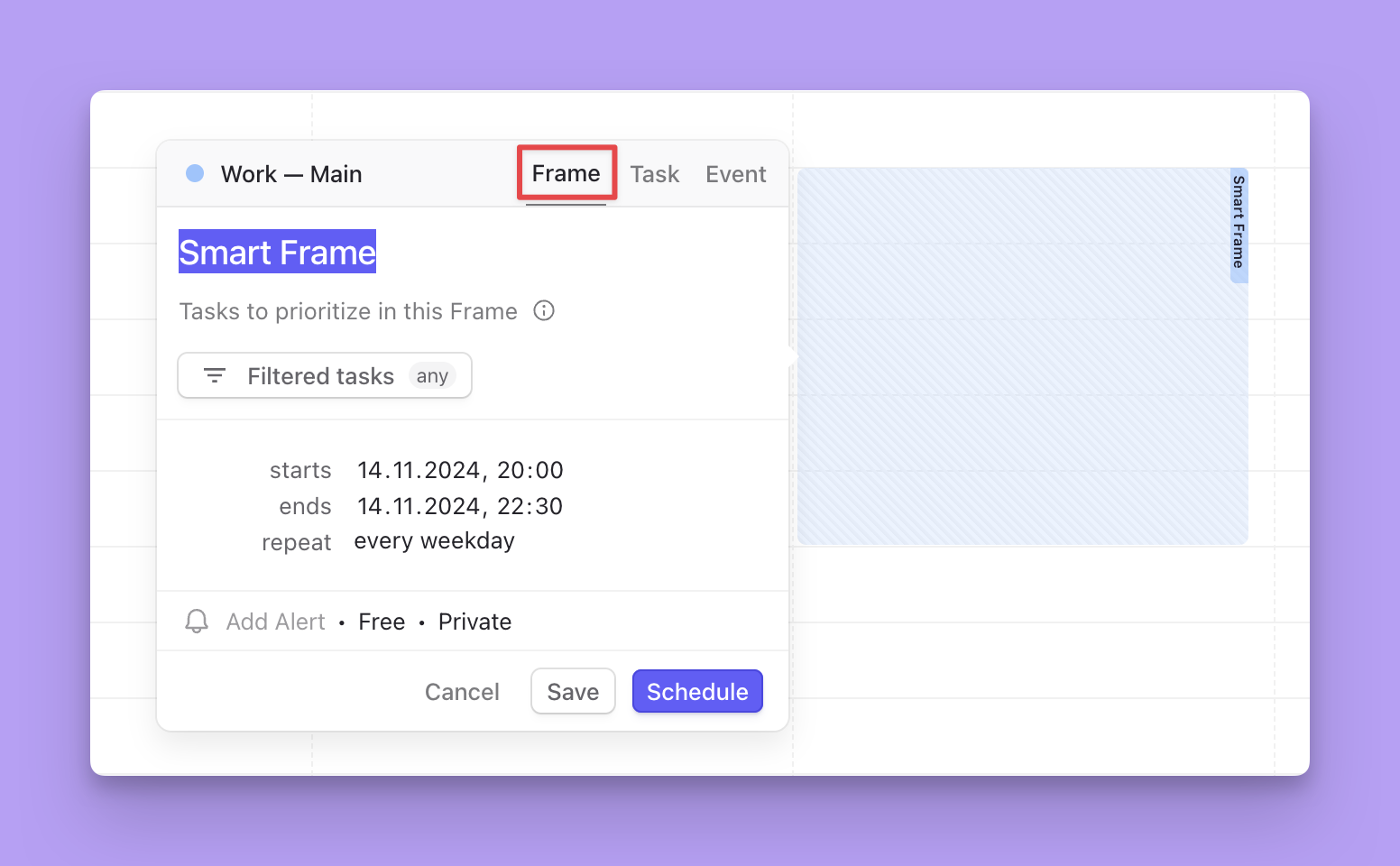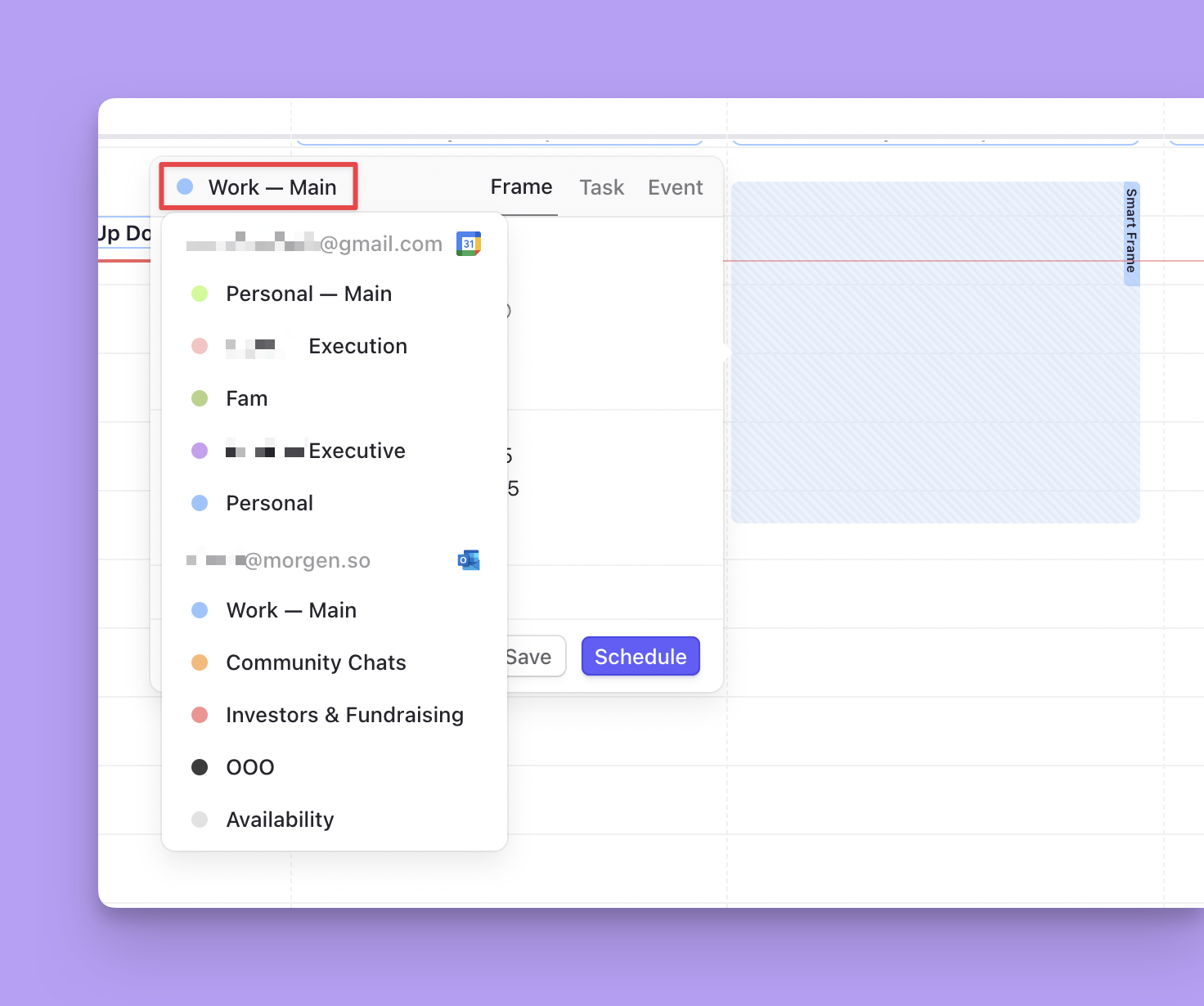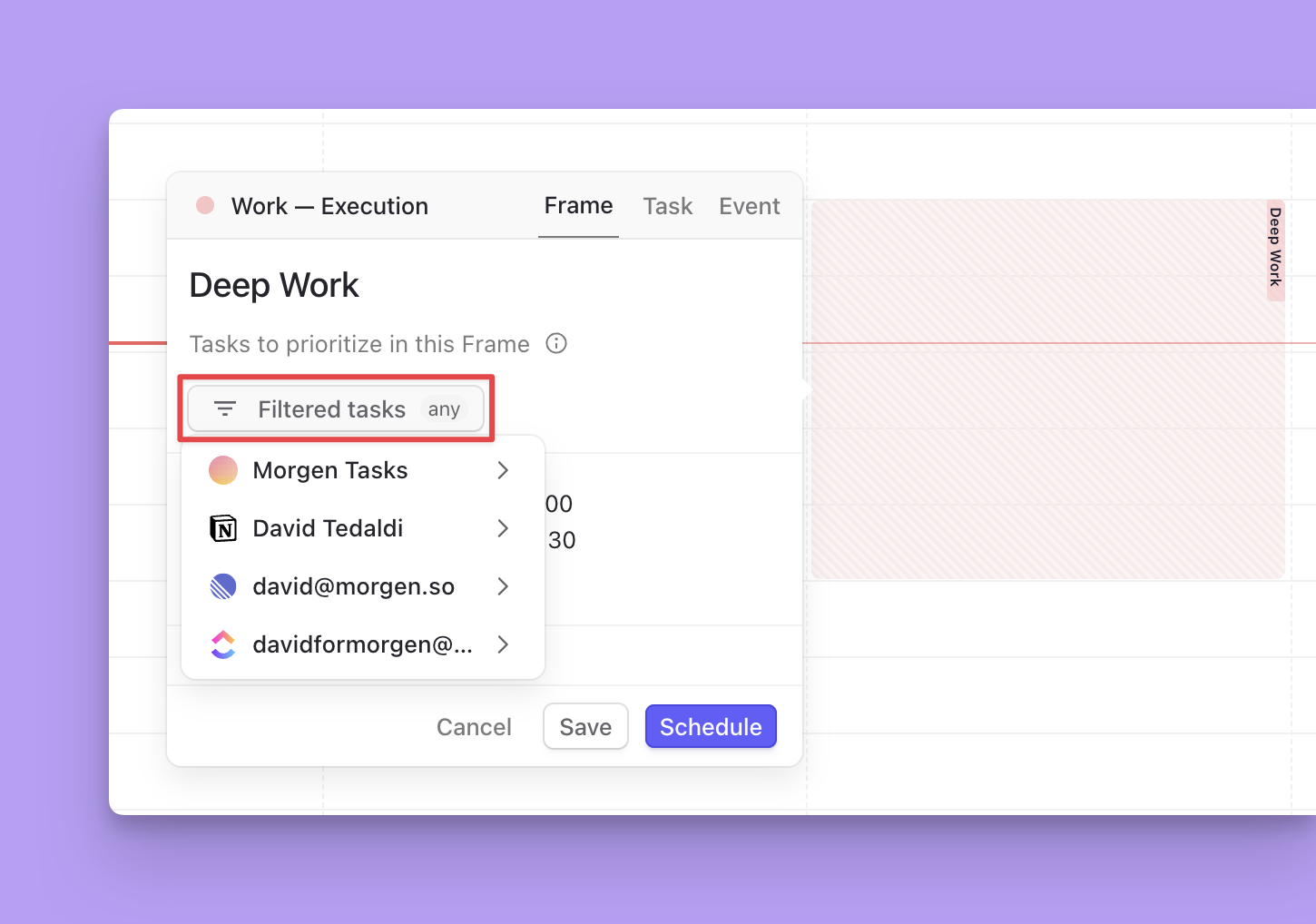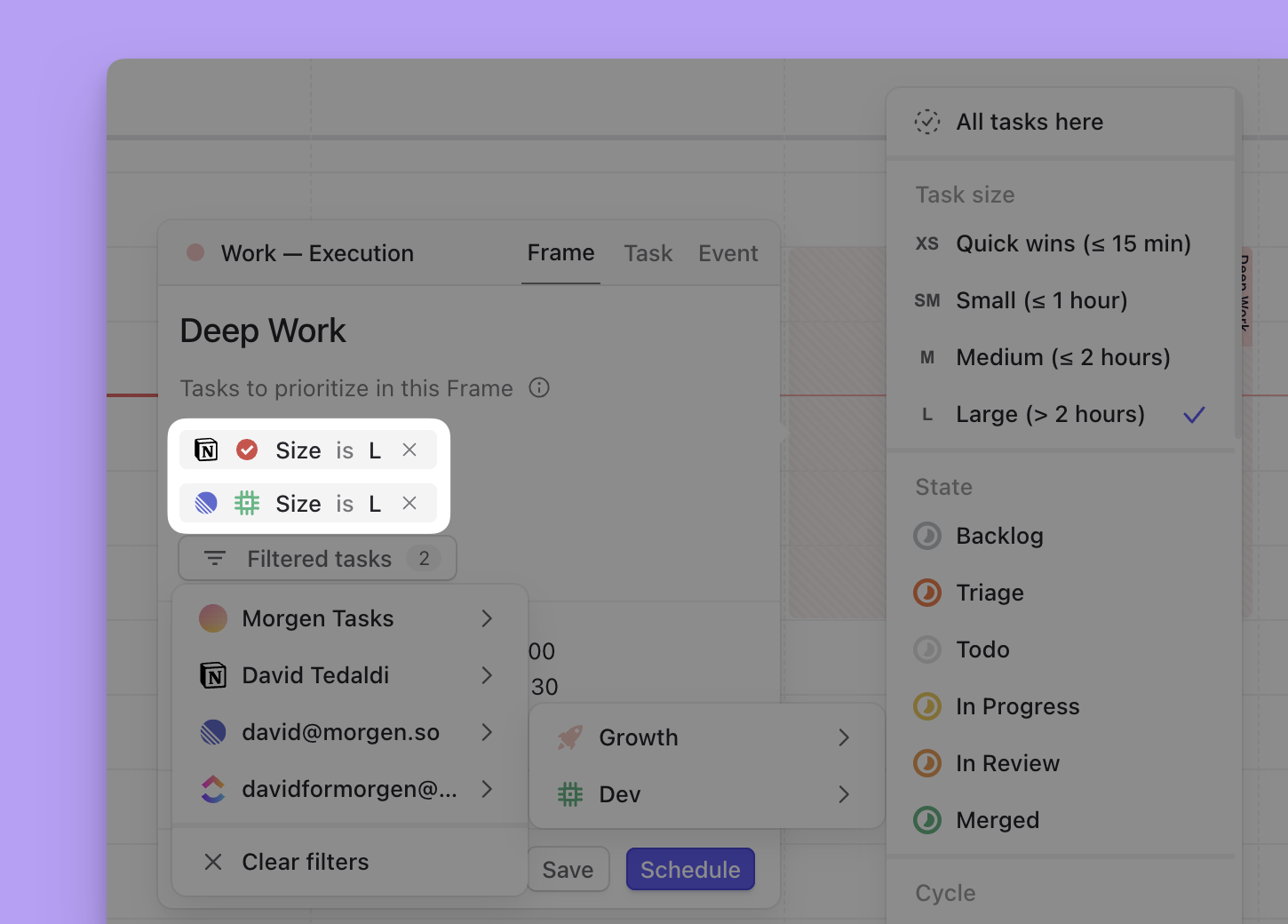Frames are a new way to template your ideal ordinary week. Each Frame is a block of time devoted to a certain type of task you want to tackle - be it for protected deep work, quick wins, personal to-dos, or learning goals. You then apply a custom filter to each Frame, ensuring the right types of tasks will be time-blocked at those times. The AI Planner uses these Frames as a guide when recommending which tasks to work on when.
We know that not every week will be that ideal week. Meetings pop-up, deadlines change, kids get sick. But they are a powerful planning tool, signaling what to work on when and adding deliberate structure to your days.
When should I create a Frame?
Frames are ideal for creating a recurring template for your week. They should be a reflection of how you work best. Here are some examples of the most common Frames we see:
- 90-120 minutes for Deep Work at the time of day you’re at your most focused.
- 1 hour of shallow work scheduled daily during the post-lunch slump.
- 1 hour of learning time daily for those who apply the 5-hour rule.
- 1 hour of life admin scheduled weekly during off-work hours.
- Day themed blocks, such as time allocated to a specific workstream once a week (ex. a day devoted to business development, user testing, etc.)
Since Frames serve as a template, they are meant to be recurrent, adding a predictable structure to your week. For scheduling habitual tasks (ex. daily stretch, get to inbox-0, etc.) we recommend using recurring tasks instead.
How to create a Frame
Creating a Frame is as easy as adding an event to your calendar. In your Morgen, click any space in the calendar where you want to add a Frame. In the event widget, select Frame. You can then change the name to be consistent with the types of tasks that you want to be scheduled at that time.

If you have multiple calendars connected in Morgen, select the destination calendar for the Frame. The calendar you choose for your Frame will be the same one the AI Planner uses to recommend time-blocked tasks for that Frame. If only one calendar is visible when creating the Frame, it will be added to the visible calendar by default.

You can also adjust whether your Frame should be set as busy or free. If busy, others will not see that time as available when using your scheduling links or the team availability check, so long as the Frame is in one of your busy calendars.
How to set the recurrence of your Frame
You may want to adjust the recurrence pattern of your Frame. By default, Frames created on a weekday recur daily Monday-Friday and those scheduled on a weekend recur weekly on either Saturday or Sunday.
If you have Frames that make more sense weekly, monthly, quarterly, or at some other regular interval, you can change the repeat pattern. To do so, select from one of the existing options or create a custom pattern.
For custom patterns, simply describe the frequency. For example:
- Every weekday but Wednesdays
- Every second Thursday
- Every Friday until January 20
- Every last day of the month
Our LLM translates your input into a pattern that calendar providers can interpret.

How to assign a filter to your Frame
If you plan to use your Frames along with the AI Planner, assigning a custom filter to your Frame ensures you receive optimal recommendations for which tasks should be scheduled when.
The filters narrow the types of tasks that should be prioritized and scheduled in your Frame based on your availability and the Morgen Priority Factor.
Note that the AI Planner considers due dates and importance levels when selecting tasks, so you don’t need to include these in your filters.
To add a custom filter, click Filtered tasks in the open widget.

You can then create a filter by selecting the task integrations, lists, projects, and/or tags you want included. If you have more than one task integration, you can have a filter capturing tasks from both. For example, if part of your team uses Linear while others use Notion, you can have large tasks from both being filtered into your deep work sessions.

Filters can always be adjusted by opening the Frame and choosing to Edit Filtered tasks.
📌 Note: local integrations such as Obsidian or Apple Reminders won't show local properties.
How to schedule tasks in a Frame
Tasks can be manually dragged and dropped onto your Frame from the task panel. You can also choose to have Morgen’s AI Planner recommend tasks to be scheduled in your Frame. Learn more in this guide.
Note that tasks are not embedded in Frames, so if you move a Frame, the overlaying tasks will not move with it. If you want to move a Frame along with the overlaying tasks together, use CTRL while clicking on what you want to move or Shift to highlight all elements in an area and then drag them.
.png)


.png)
